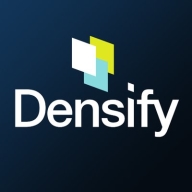

Cloudability and Densify are competitors in the cloud cost management category. While both offer robust features, Densify has an upper hand with its advanced optimization and analytics capabilities, promising better long-term value.
Features: Cloudability offers intuitive cost tracking, comprehensive visibility for cloud expenditures, and budget forecasting with alerts to manage finances efficiently. Densify provides intelligent optimization tools, detailed capacity analytics, and integration capabilities that refine infrastructure performance. Both have unique benefits with Cloudability's ease of use and Densify's granular optimization strengths.
Room for Improvement: Cloudability could enhance its advanced analytics capabilities, add more integration options with other cloud services, and offer more detailed optimization recommendations. Densify may improve by simplifying its initial setup process, expanding its user interface's intuitiveness, and offering more straightforward pricing information. Both tools have opportunities to strengthen their platforms to meet user demands better.
Ease of Deployment and Customer Service: Cloudability's deployment process is straightforward, paired with effective support, which facilitates quick integration. In contrast, Densify offers more personalized deployment through dedicated customer service, resulting in a more customized setup despite requiring longer initial timelines. Each has its approach to deployment, suiting different enterprise needs.
Pricing and ROI: Cloudability provides a transparent pricing model, yielding quick ROI through clear cost insights and simple adoption. Densify's deeper infrastructure optimization leads to higher resource efficiency, justifying potentially higher upfront costs with significant ROI. When resource utilization is a priority, Densify proves to be a strong investment, while Cloudability appeals with its prompt insight delivery.
| Product | Market Share (%) |
|---|---|
| Cloudability | 12.0% |
| Densify | 2.0% |
| Other | 86.0% |


| Company Size | Count |
|---|---|
| Small Business | 2 |
| Midsize Enterprise | 4 |
| Large Enterprise | 11 |
| Company Size | Count |
|---|---|
| Small Business | 1 |
| Midsize Enterprise | 1 |
| Large Enterprise | 9 |
Cloudability is a financial management tool for monitoring and analyzing every cloud expense across any organization. It brings transparency to how and where organizations spend money on cloud resources, giving them the power to reap the most value from cloud usage possible. It aggregates expenditures into accessible and comprehensive reports, helps identify new opportunities for reducing spend and increasing cloud efficiency, offers budget alerts and recommendations via SMS and email, provides APIs for connecting cloud billing and usage data to any business or financial system, and more.
Densify is a hybrid cloud and container resource management platform that makes workloads self-aware of their precise resource requirements and automates the resource management and selection process. This solution helps you control your cloud spend and also helps your apps perform and scale better. Densify enables you to match your cloud requirements with the optimal cloud supply. Additionally, Densify is the only technology that leverages patented, predictive machine learning-powered analytics to perform advanced modeling of workload patterns, and provide precise optimization directives. It is ideal for cloud engineers, container platform owners, and IT finance.
Densify works by:
Densify Features
Densify has many valuable key features. Some of the most useful ones include:
Densify Benefits
There are many benefits to implementing Densify. Some of the biggest advantages the solution offers include:
We monitor all Cloud Cost Management reviews to prevent fraudulent reviews and keep review quality high. We do not post reviews by company employees or direct competitors. We validate each review for authenticity via cross-reference with LinkedIn, and personal follow-up with the reviewer when necessary.